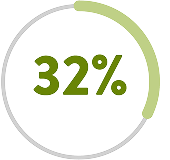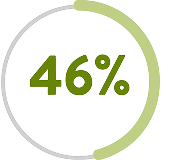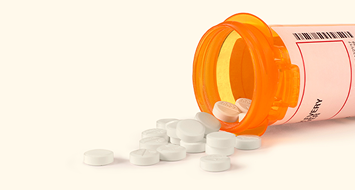Stay up-to-date with information about rising ketones and DKA.
THREAT OF DKA
A DKA emergency can strike at any age in people with any type of diabetes1.
DKA can pose serious challenges and life-threatening risks for your patients with type 1 diabetes or type 2 diabetes1.
Can escalate quickly1,4,5
Precipitating factors can be unpredictable and hard to avoid7
Leading cause of T1D mortality5
SGLT2 inhibitors increase risk in T2D1
GAPS IN PATIENT KNOWLEDGE
Many people with diabetes are unaware of DKA2*.
Many people living with diabetes may be unprepared for a DKA emergency, lacking an understanding of the condition, the symptoms, and the importance of testing ketone levels2.

were not familiar with
the term DKA2†

were unable to name a single
symptom of DKA2

did not test for ketones at all2
*Multinational, multicenter survey of endocrine outpatient clinic patients with average duration of type 1 diabetes of 22 years (N=333)2.
†Participants rated their own knowledge of DKA significantly lower than their physicians did (p<0.0001)2.
People with diabetes often miss the symptoms of rising ketones3.
Many symptoms of rising ketones are similar to common, less serious ailments. It’s easy to see why people with diabetes may misattribute them—and miss the opportunity to test ketone levels early before they progress into later symptoms of DKA3.

“Before my first DKA experience, I didn’t know what the symptoms were. I was feeling very nauseous. I would have to urinate every five minutes, and I would have that funky smell in my breath. I didn’t know I should have sought help—I just thought this is what happens when you have high blood sugar.
— Gibran lives with type 1 diabetes
SIGN UP
Thank you!
You will now receive email updates about the threat of rising ketones and DKA.
DKA=diabetic ketoacidosis; SGLT-2=sodium-glucose cotransporter-2; T1D=type 1 diabetes; T2D=type 2 diabetes.
1. Umpierrez, G. E. Diabetes Care (2024). https://doi.org/10.2337/dci24-0032.
2. Hepprich, M. BMJ Open Diabetes Research & Care (2023).https://doi.org/10.1136/bmjdrc-2023-003662.
3. Virdi, N. Diabetes Technology & Therapeutics (2023).https://doi.org/10.1089/dia.2023.0149.
4. Centers for Disease Control and Prevention. “About Diabetic Ketoacidosis.” Accessed May 30, 2025 https://www.cdc.gov/diabetes/about/diabetic-ketoacidosis.html.
5. Nguyen, K. T. Journal of Diabetes Science and Technology (2022). https://doi.org/10.1177/19322968211042656.
6. Sherr, J. Diabetes Technol Ther (2024). https://doi.org/10.1089/dia.2024.2525.abstracts.
7. Lizzo, J. M. “Adult Diabetic Ketoacidosis” In StatPearls. Treasure Island (FL): StatPearls Publishing, July 10, 2023.
8. American Diabetes Association. “Diabetes & DKA (Ketoacidosis).” Accessed May 30, 2025.https://diabetes.org/about-diabetes/complications/ketoacidosis-dka/dka-ketoacidosis-ketones.
9. American Diabetes Association. “Planning for Sick Days.” Accessed May 30, 2025.https://diabetes.org/getting-sick-with-diabetes/sick-days.
10. Huang, J. Journal of Diabetes Science and Technology (2024).https://doi.org/10.1177/19322968231152236.
ADC-111214 v1.0

















